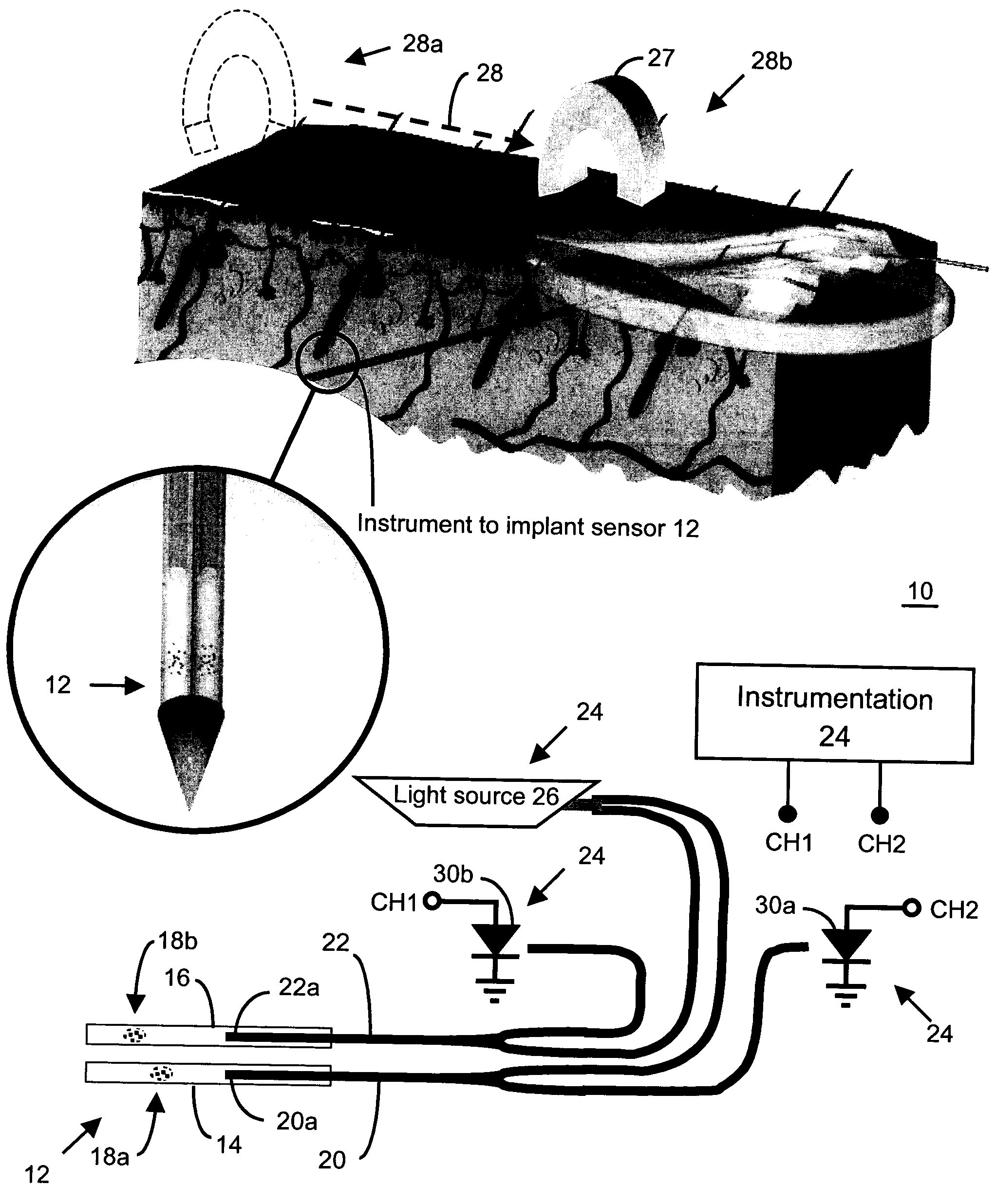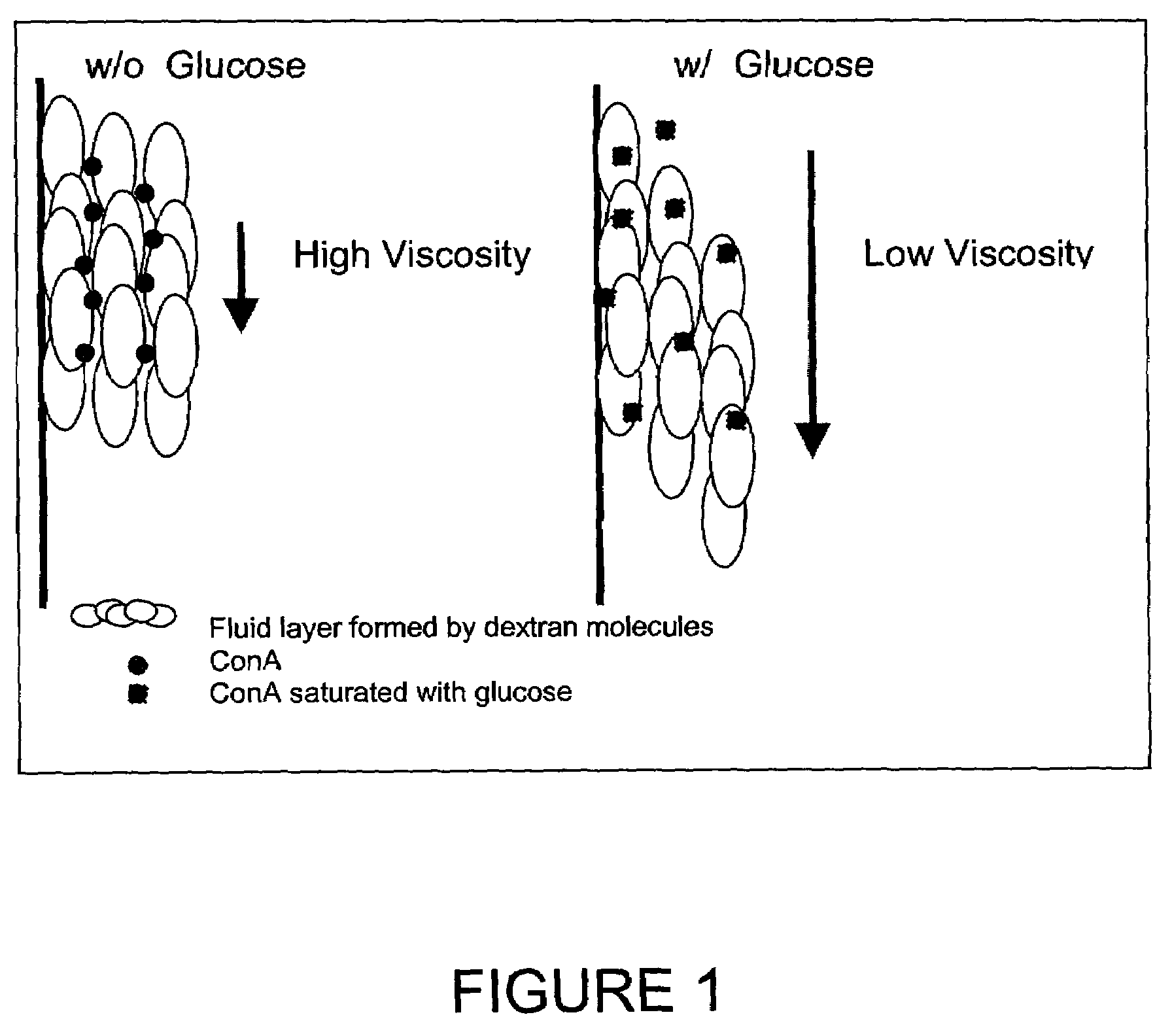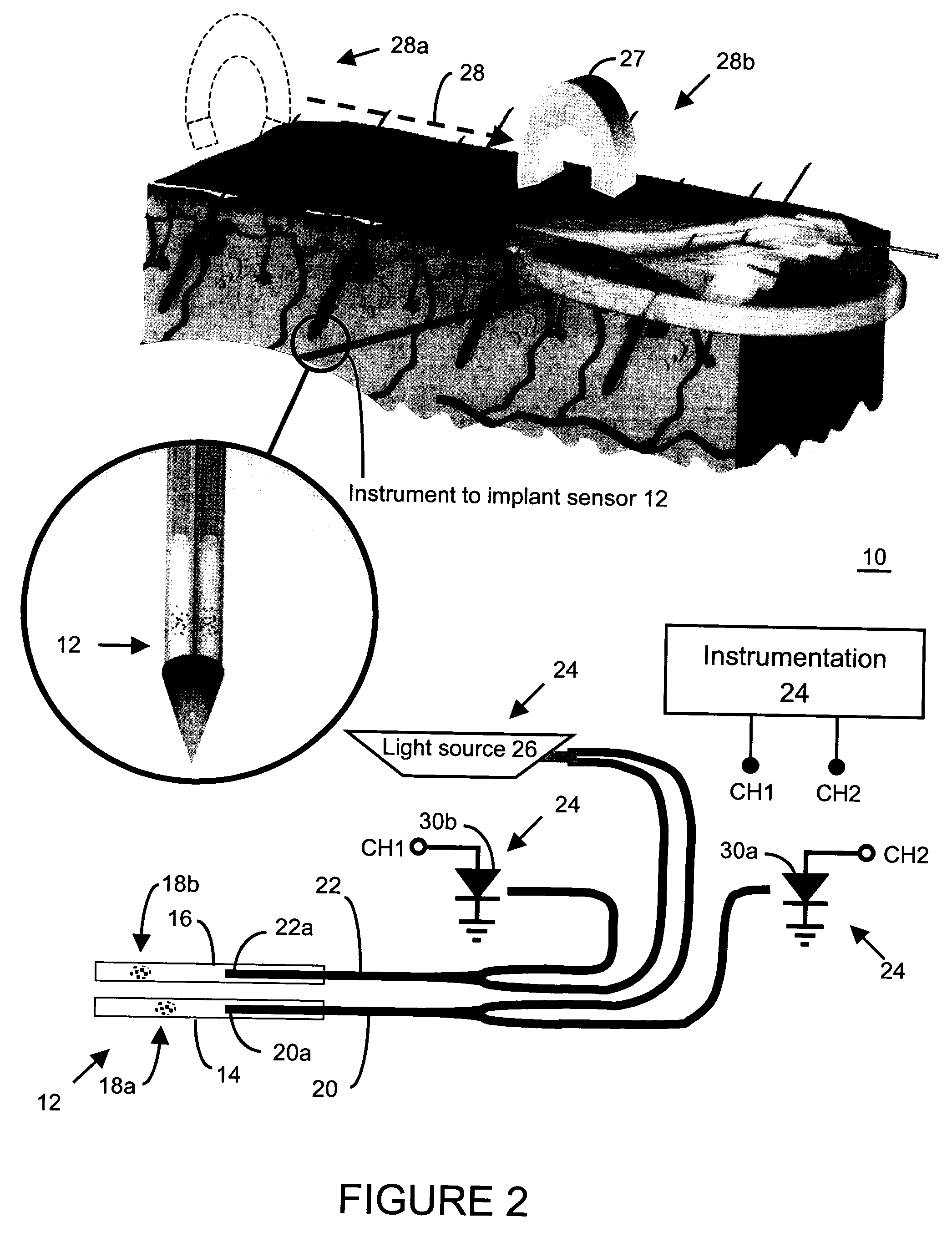Method and apparatus for analyte sensing
- Summary
- Abstract
- Description
- Claims
- Application Information
AI Technical Summary
Benefits of technology
Problems solved by technology
Method used
Image
Examples
Embodiment Construction
[0030]With reference to FIG. 2, the glucose sensing system 10, according to one embodiment of the present invention, includes sensor 12 having glucose chamber 14 and reference chamber 16. The sensor 12, in one embodiment, is implanted into or beneath the skin barrier of an animal body using a small needle-type instrument. In this regard, sensor 12 may be disposed within the subcutaneous tissue when the small needle-type housing is introduced through the skin. Thereafter, the sensor 12 may be affixed in place within subcutaneous tissue after the small needle-type housing is withdrawn.
[0031]In one embodiment, glucose and reference chambers 14 and 16, respectively, include magnetic (e.g., paramagnetic, superparamagnetic, and / or ferromagnetic) particles 18a and 18b, respectively, that are dispersed in a Concanavalin A (“ConA”)—dextran hydrocolloid (for example, 5% dextran (Mw 2000 kDa) and 1% ConA (volume of 0.5 μl)). In one embodiment the magnetic particles 18a and 18b are may be a par...
PUM
 Login to View More
Login to View More Abstract
Description
Claims
Application Information
 Login to View More
Login to View More - R&D
- Intellectual Property
- Life Sciences
- Materials
- Tech Scout
- Unparalleled Data Quality
- Higher Quality Content
- 60% Fewer Hallucinations
Browse by: Latest US Patents, China's latest patents, Technical Efficacy Thesaurus, Application Domain, Technology Topic, Popular Technical Reports.
© 2025 PatSnap. All rights reserved.Legal|Privacy policy|Modern Slavery Act Transparency Statement|Sitemap|About US| Contact US: help@patsnap.com



